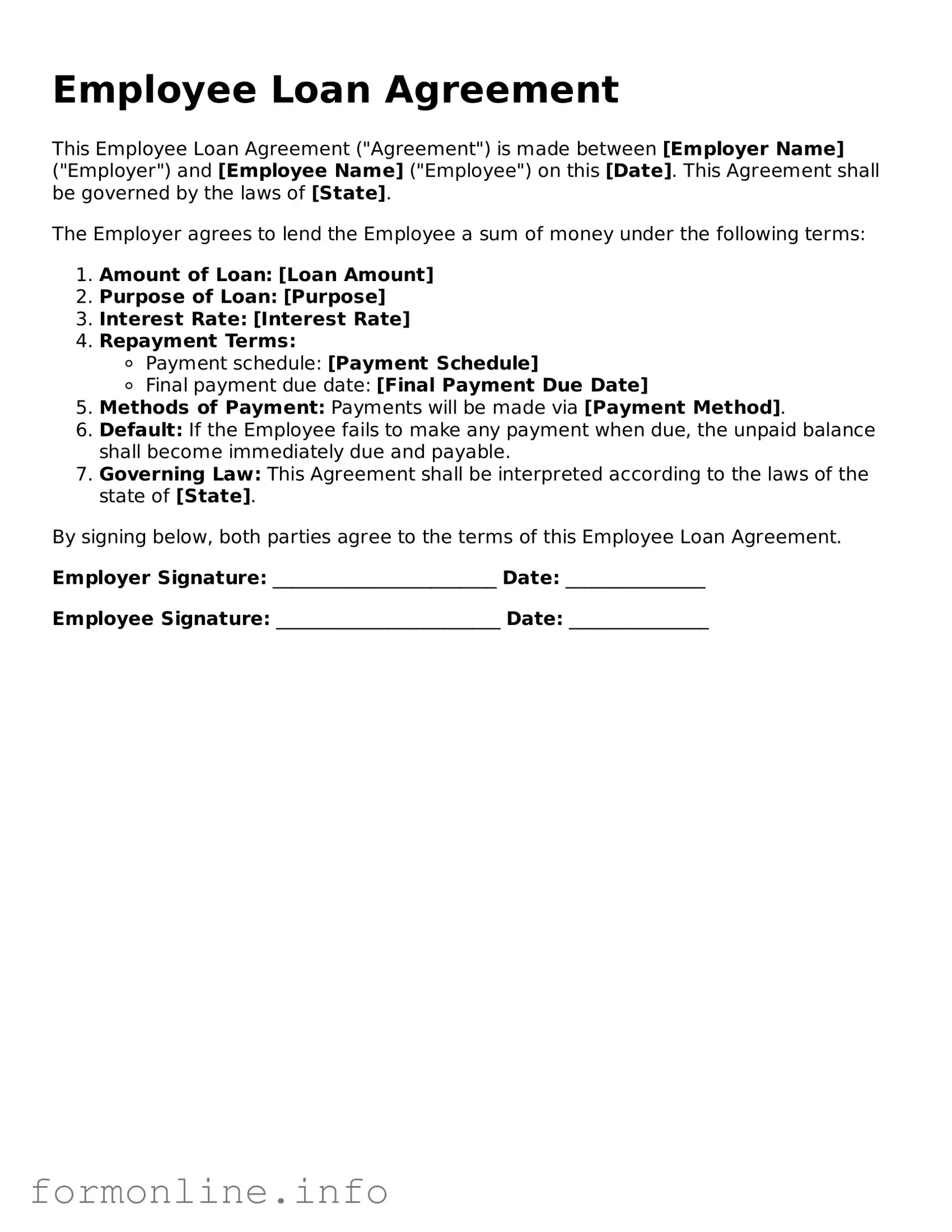The Employee Loan Agreement form shares similarities with a Personal Loan Agreement. Both documents outline the terms under which one party lends money to another. They detail the loan amount, interest rate, repayment schedule, and consequences of default. Personal loans are typically used for individual needs, while employee loans are specifically tailored for workplace relationships, fostering trust and responsibility between employer and employee.
Another related document is the Promissory Note. This is a straightforward agreement where the borrower promises to repay a specified amount to the lender. Like the Employee Loan Agreement, a Promissory Note includes key details such as the loan amount and repayment terms. However, it is generally less formal and may not cover aspects like employment status or conditions specific to the workplace.
A Loan Repayment Plan is also similar, as it outlines how the borrower will repay the loan over time. This document typically includes payment amounts and due dates. While an Employee Loan Agreement may incorporate a repayment plan, a standalone Loan Repayment Plan focuses solely on the repayment structure without detailing the initial loan agreement.
The Credit Agreement is another comparable document. This agreement outlines the terms of credit extended to an individual or business. Like the Employee Loan Agreement, it specifies the amount, interest rate, and repayment terms. However, credit agreements often cover broader financial arrangements, including revolving credit, which is not typically the case with employee loans.
A Loan Application form is also relevant. This document is used to request a loan and provides the lender with necessary information about the borrower’s financial situation. While the Employee Loan Agreement finalizes the terms of a loan, the Loan Application is the initial step in the borrowing process, collecting information that helps determine eligibility.
The Mortgage Agreement bears similarities as well, particularly in its structure and the legal obligations it creates. This document is used when a borrower secures a loan against property. Both agreements detail repayment terms and consequences for default. However, a Mortgage Agreement usually involves larger sums and real estate, while an Employee Loan Agreement is more personal and often smaller in scale.
Understanding the nuances of various loan agreements is essential for both lenders and borrowers, particularly when it comes to the specifics of terms and expectations. For those interested in a structured approach to lending, the Employee Loan Agreement lays out a clear framework similar to that of a Personal Loan Agreement or a Promissory Note. To explore these options further and discover how to formalize your agreement, read here.
Lastly, a Lease Agreement can be likened to the Employee Loan Agreement. Both documents establish a contractual relationship between parties, outlining obligations and rights. A Lease Agreement details terms for renting property, including payment and duration. While the contexts differ, both agreements require clear terms to protect the interests of all parties involved.
